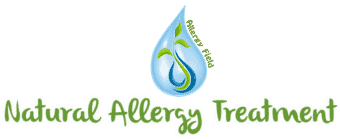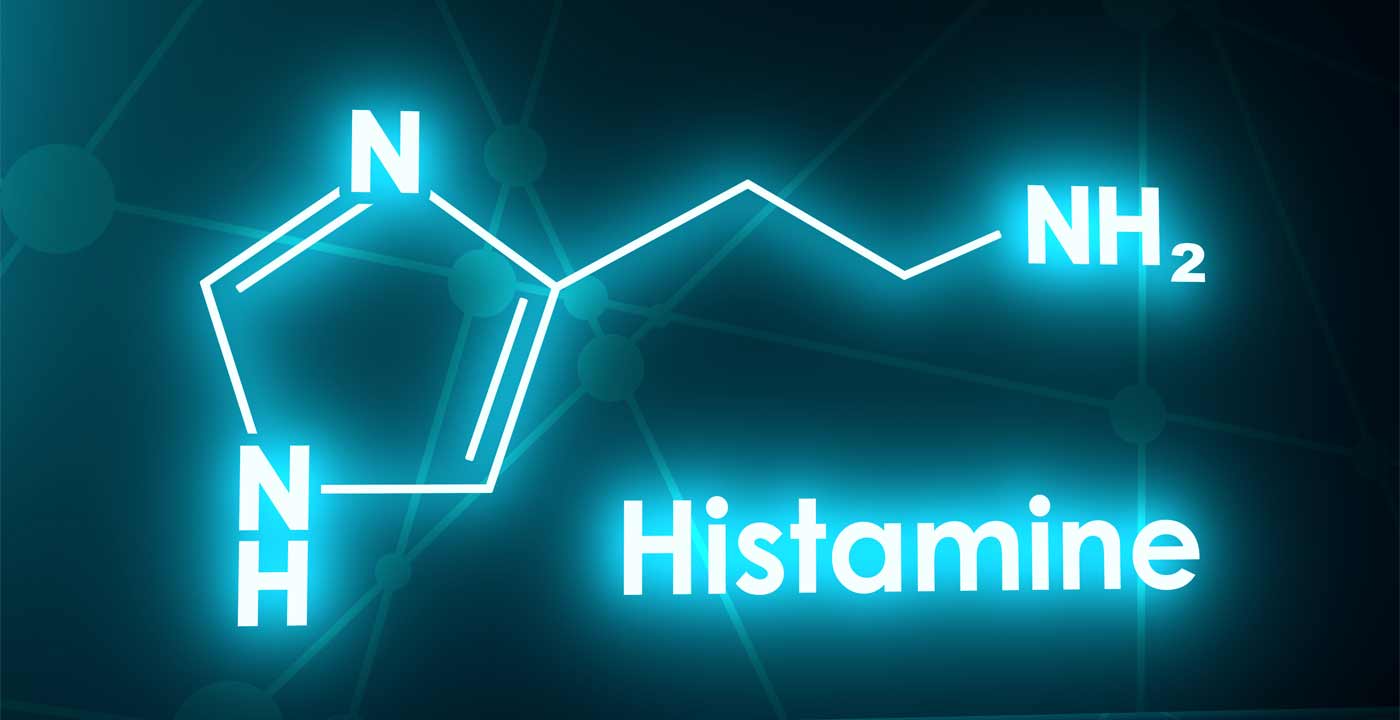Histamine fulfills many important functions in the human body. It is produced by the body and can also be obtained through food.
Histamine is stored and can be released from nerve cells and mast cells.
An excess of histamine can lead to many symptoms. It is important to reduce excess histamine if it builds up in the body. The enzyme Diamine oxidase (DAO) and histamine-N-methyltransferase (HNMT) help break down histamine.
Which enzyme is used depends on where the histamine is stored in the body.
If these enzymes are not available in sufficient quantities or are not working effectively, symptoms of histamine intolerance are often present.
Excessive histamine can also be caused by over consumption of histamine in several ways:
- Foods that are high in histamine
- Foods that contain substances very similar to histamine. Foods that fall under this category are biogenic amines such as cheese, sausage, fermented vegetables and wine.
Foods that affect the release of histamines in cells. Food included in this group are histamine liberators such as citrus, peanuts, fish, shellfish and egg whites.
- DAO and HNMT-blocking substances such as alcohol and and many prescription drugs.
Medications that can affect the way the body metabolises histamine include antibiotics, antidepressants, gastrointestinal medicines, antihypertensives (which treat high blood pressure), muscle relaxants, narcotics, local anesthetics and nonsteroidal anti-inflammatory drugs.
Intestinal inflammation can also lead to insufficient production of DAO which causes histamine intolerance.
Histamine intolerance symptoms
A histamine intolerance can cause symptoms immediately after eating the food or may develop a few hours later.
Symptoms often include itchy skin, rashes, nausea, loose stools, stomach pains, gas, low blood pressure, runny or blocked nose, headaches, migraines or fatigue.
There are many treatment options for histamine intolerance:
1. Avoid all foods contributing to histamine production or release of histamine
You should not eat any food that can raise your histamine level until you are symptom-free.
It can generally be said that food items that undergo a prolonged aging process or fermentation are especially rich in histamines.
Histamine-rich foods
These are examples of foods that are rich in histamine or promote histamine release:
- Alcoholic beverages, particularly champagne, red wine, and wheat beer.
- Cheese, especially hard cheeses and aged cheeses such as Parmesan, Emmental, Gouda.
- Camembert and Brie.
- Cocoa and cocoa products, such as chocolate.
- Salami
- Nuts, particularly cashews or walnuts
- Tomatoes
- Citrus fruit, strawberries, pears, bananas, pineapple, kiwi, and bananas
- Legumes
- Sauerkraut
- Spinach
- Vinegar
- Fish and seafood.
As mentioned before, some medications can block DAO or act as histamine liberators.
2. Identifying the individual tolerance level
Each person has a different tolerance level to histamine. The performance of DAO and HNMT will also affect how much histamine can actually be broken down.
After your symptoms improve, you can begin by having small amounts of histamine and keep a daily log that will allow you to identify how much you can have without having any symptoms.
3. Taking natural supplement that suppress histamine production
Nettle leaf is a natural antihistamine that naturally blocks histamine production.
Numerous studies have shown that an intake of Vitamin C as a supplement can reduce the symptoms of histamine intolerance.
Quercetin, a plant pigment found in many proclaimed superfoods, has been shown to be an effective supplement for histamine intolerance by directly blocking the release of histamine from mast cells.
4. Intestival Rehabilitation
An insufficient amount of DAO may be produced if intestinal inflammation is present.
In the event of a bacterial imbalance in the intestines a disproportionate amount of histamine could be released which can lead to an increase in the histamine levels and consequently to an excess of histamine.
Even if you have tried everything to avoid histamine-rich foods and drinks, your symptoms may not have improved.
It is possible that the cause is not limited to histamine intolerance. Another possible cause could be an IgG food product.
An allergy, imbalance of hormones or chronic virus infection could affect histamine levels.
Allergy Field offers testing and treatment for food sensitivities and allergies and can check what is affecting your histamine levels.
If you’ve tried reducing histamines in your diet, but noticed no improvement, please get in touch and receive your FREE online consultation to help you uncover the causes of your elevated histamine levels.
keywords: histamine allergy, high histamine foods, Foods High in Histamine, food histaminosis, Histamine intolerance, hypersensitivity to food histamine

